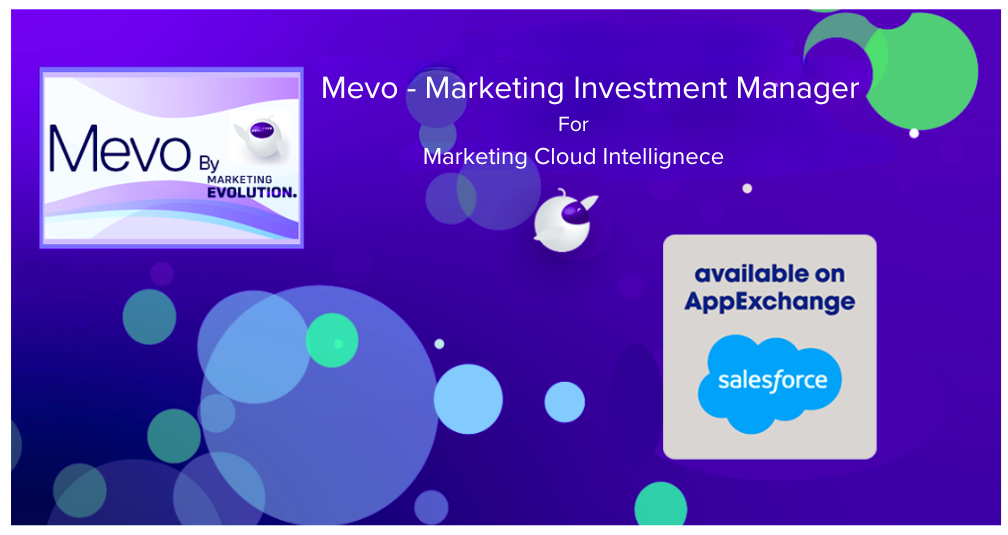Yesterday's Marketing Analytic Truths are Today's Marketing Lies
Marketing is ever-evolving, with new trends and strategies emerging constantly. However, there are a few fundamental controversial truths that many marketers may not know. These truths challenge traditional marketing wisdom and require a fresh perspective for maximum marketing success.
This blog will discuss four controversial marketing truths that may challenge your current beliefs and practices about marketing. By embracing them and adjusting your marketing strategy, you can navigate the complex landscape of modern marketing and achieve success for your company. Let's uncover these truths that every marketer should know.
Key Takeaways:
- Controversial Truth #1: Not Everyone Responds to Marketing the Same Way
- Controversial Truth #2: Response Curves in Media/Marketing Mix Models Are Multi-Dimensional, Not Two-Dimensional
- Controversial Truth #3: Media Mix Models with Seasonality Constraints are Flawed
- Controversial Truth #4: Testing is the Only Real Way to Determine Accurate Media Mixes - But Only in a Very Specific Way
- How Marketing Evolution is Creating the Future of Marketing Today

What are the Four Controversial Marketing Truths Marketers Should Know?
In the marketing industry, there are truths that marketers must know, mainly because they are making decisions on outdated approaches. These truths go against conventional wisdom and require marketers to embrace newer analytic methods that could be considered controversial. If you’re wondering why they’re controversial, it’s because older methods were developed to address data and technology limitations. They’re now outdated, but they’ve become engrained in marketing practices because they’re been used for decades. It’s time for marketers to adapt and adopt more innovative, improved approaches, which are now possible because of technological advances like better microchips and generative AI. Here are four controversial marketing truths that every marketer should be aware of so their organizations can plan to learn about and apply better methods that are now available.
Controversial Truth #1: Not Everyone Responds to Marketing the Same Way
While this may seem obvious to many readers, it’s an underlying assumption in many “standard” marketing practices, including projections created in media mix buying models. Media and marketing mix models assume that everyone responds to media similarly, but this overlooks the fact that people have different responses. Beliefs, location, age, platforms used, and socioeconomic status influence various perceptions and resulting decisions to engage or not.
Currently, marketing methods rely on aggregated data and assumptions rather than empirical evidence on an individual level. They assume that everyone in a market is exposed at the same rate. We all know that this is not true. To appeal to different audiences, learning which messages are most impactful in eliciting the desired response at a personal level is now possible. Individual characteristics, attitudes, and behaviors can be analyzed so marketing allocation recommendations can be made quickly to make the most of marketing efforts. However, due to limitations in data and technology, methodologies were developed to address these constraints. They are no longer relevant.
Marketing optimization means making decisions based on data and aiming for a return on investment that more than covers costs. It's like playing a slot machine at a casino — you keep spending as long as you're winning enough to cover expenses and even come out ahead with more earnings. In marketing, the goal is to allocate resources to different platforms like TV, TikTok, direct mail, Meta, and paid search to cover expenses and garner good returns.
Marketers need more than channel-level insights and should now consider how individuals respond across publishers for every advertisement to optimize their spend allocation and message targeting. The old, generalized, aggregate-data methods don’t provide enough granularity to benefit marketers in today’s dynamic, robust media environment. Data processing speed and expense were prohibitive, so aggregate approaches were developed. Data volume is exploding, but affordable technology is now available to enable the most granular insights for marketing optimization.
The clip below discusses the qualities of an effective marketing solution to help you determine which solution aligns with your business goals and whether you need a swift delivery or retrospective analysis.
Controversial Truth #2: Response Curves in Media/Marketing Mix Models Are Multi-Dimensional, Not Two-Dimensional
Response curves are used to understand the relationship between media exposure and consumer response. Traditional models assume that people respond predictably to media stimuli, assuming every consumer will take the same action when presented with a particular prompt, such as a CTA ad or video. However, these models need to account for the multi-dimensional nature of what influences consumer behavior. Multi-dimensional response curves offer a more comprehensive understanding of how demographic factors such as education, household mix, and culture influence consumer response. These curves reveal how different factors, such as demographics, locations, attitudes, time, and the number of media exposures, impact response rates, and campaign effectiveness.
Fortunately, marketers now have newer methods that can capture all curves because tech has advanced to be powerful enough to process these vast datasets at a reasonable cost. Unlike older, two-dimensional approaches, these multi-dimensional curves consider all campaign variables influencing a person's conversion journey. This allows marketers to assess their proper marketing mix performance and make informed decisions rather than relying on assumptions “baked into” the models themselves. Now, marketers can see the real impact of how their premises align with driving results rather than letting their model skew them to bear out a false version of reality.
Controversial Truth #3: Media Mix Models with Seasonality Constraints are Flawed
Media mix modeling needs to address seasonality and demographics, but in a different way than it is handled with most approaches. Most media mix models today, unfortunately, rely on aggregated data that doesn’t consider individual preferences or characteristics. Aggregate data is collected, disregarding specific market segments and person-level data. The high correlations between different media types in the data can also contribute to the generally inaccurate assumptions built into these models.
Seasonality is a large “wrench in the works” for these models, assuming consistent consumer behavior year after year, which is rarely the case. Endogeneity, where two events happen simultaneously, makes determining cause-and-effect relationships in the market challenging, creating a climate where seasonality is used as the rationale for many costly and often ineffective marketing mix decisions because other concurrent factors aren’t considered. Consumers don’t make purchasing decisions in a vacuum; outside forces not accounted for in the current models, like economic climate, political influences, supply chain fluctuations, inflation, and world events, create unforeseen results and blind marketers when their seasonality calculations go awry. These flaws result in inaccurate measurements and wasted spending across platforms and categories.
The implications of this issue challenge the belief that past marketing performance can accurately predict future results. The solution is for marketers to accept that testing is the only reliable way to choose a market model. Many marketers try to solve this problem the “quick and easy way” by making assumptions that rely on past data and generalities like seasonality predictions, resulting in suboptimal performance and lots of wasted spend. As a result, this controversial truth emphasizes the importance of recognizing the limitations of traditional marketing measurement methods. It underscores the necessity for thorough testing and analysis to make informed marketing decisions. Fortunately, new technology is available today to facilitate testing at a massive scale over just one week or two to minimize risk and provide confidence in model results.
Controversial Truth #4: Model Fit is No Longer the Gold Standard to Determine Model Accuracy
Testing at scale is the only way marketers determine accurate media mixes and optimize strategies. However, testing can be unpopular due to the “trial and error” approach and the time needed to get the right combination of platforms and targeting.
While many marketers think of A/B testing as the gold standard, many publishers are profit-driven and are often opaque and vague. This creates a morass of unforeseen fluctuations in the results of a testing campaign. Moreover, marketers can't guarantee a "sterile" test field for their campaigns as these publishers prioritize profit over testing marketing metrics, which often means changing up audiences and impression rates, whether subtly or overtly, to benefit the platform rather than the marketer. It raises the question of where to go for accurate testing. External validity tends to be limited as circumstances can't be controlled in the laboratory-like setting marketers seem to think they’re getting when testing campaigns.
To overcome this, marketers can use marketing response models and control for endogeneity confounds by running test data through them. This helps mitigate the impact of external factors and provides more reliable results.
In the following clip, Marketing Evolution COO/CAO Winston Bradley and Marketing Evolution CEO Stephen Williams delve into the nuances of trust surrounding marketing analytics data and discuss the common pitfalls marketers often encounter.
Why Should You Understand These Controversial Marketing Truths?
The marketing world is changing rapidly, and many marketers have felt in recent times as if regulatory changes and tech innovations have invalidated their entire knowledge base. Ad blockers, the new frontier of cookieless marketing, and consumer passivity to marketing messages in the face of overwhelming amounts of online stimuli necessitate alternative engagement strategies. Data privacy regulations also significantly limit access to information, creating a situation where marketers must balance personalization and privacy to build trust with modern consumers and hit or exceed their ROAS (return on ad spend).
As marketing mix optimization becomes increasingly essential to drive results, leveraging the enhanced capabilities of newer measurement methods is vital. Where in the past, measuring every touchpoint on every platform used by every consumer would have been prohibitively expensive or simply impossible, today, it’s the new gold standard. By acknowledging how the old marketing truths have become the new marketing lies, marketers can make informed decisions to drive effective campaigns to their target audiences.
With the emergence of machine learning and artificial intelligence (AI), many new solutions are available that promise quicker and more frequent updates of marketing impact results. However, it is essential to investigate the methodology behind these solutions. Some newer approaches, like traditional marketing mix modeling, may still rely on outdated methods. These outdated methods were designed to address the limitations we have been discussing, and using them alongside machine learning and AI may result in inaccurate or ineffective outcomes.

How Marketing Evolution Can Help Propel Your Marketing Strategy Forward
Marketing Evolution’s science-based approach leverages advanced generative AI technology based on academically proven marketing analytic expertise. To propel your marketing strategy forward, our solution provides specific media allocation recommendations to improve marketing impact on any KPI. Use innovative technology to make better decisions faster to optimize media budgets.
Marketing Evolution’s platform addresses the flaws we’ve covered in this blog post and many others. Our solution specializes in media and marketing mix modeling, enabling you to understand the effectiveness of different marketing channels and allocate your budget accordingly. Whether you aim to improve customer acquisition, increase brand awareness, or drive sales, M/E provides the insights and tools to achieve your marketing goals. Request a demo now to discover how we can help you maximize the ROI of your marketing campaigns.


.png?width=514&height=132&name=KO%20CTA%20CHANGES%20(1).png)